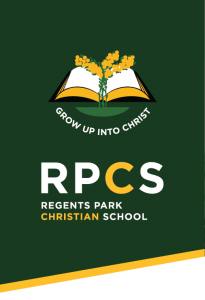Over the past 12 months, we have been exploring some of the Biblical foundations for a Christian school. The School Board kindly approved me undertaking further study at Regent College in Vancouver, Canada last year and I was able to study a number of key topics that I believe impact directly on how a Christian school grows and develops. As a result, I wrote a number of briefing papers that involved significant conversations with our school’s Pastor, Mitch Levingston and our School Chaplain, Trent Callus.
The briefings were:
* What does conversion look like in a Christian school and what is its importance to assist the student to purposefully grow up into Christ?
* What is sin?
* What is the difference between salvation and conversion?
* What does Christian community look like in a Christian school?
* What is the purpose of service in a Christian school?
This year, we have begun to review our Statement of Faith and how it can be used by our students to tell a story of what they are in Christ. The staff has been reviewing ‘how do we read the Bible and how are we meant to apply the Bible?’ We have been looking at:
– common ways people seek to read and interpret the Bible
– the Bible is God’s narrative
– the Bible is a story with power
– what is the Bible’s main plot?
The staff has been studying the links between the Old and New Testaments. We are increasingly studying the Old Testament to provide the context for the New. When the Puritans arrived in America to start a new movement they only brought the New Testament with them, hence they did not bring all of God’s story with them.
We have also been studying about how to connect with the Bible, a document that is more than 2000 years old. It is about how to apply the Bible to the 21st Century rather than trying to take Christians back to the 1st Century AD. We are helping our young people understand the big picture in order to understand our place in God’s story.











